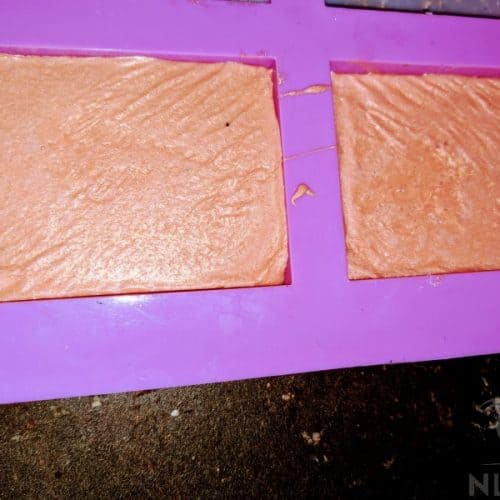Orange zest soap can rejuvenate not just the skin infuse a little bit of happiness into the day when using it as part of the morning shower routine… especially during the long, cold months of winter.
If you make orange zest soap with a clear glycerin melt and pour soap base, the dried tiny bit of the orange peel can be suspended inside of the bar just as it is done when making a floral soap.
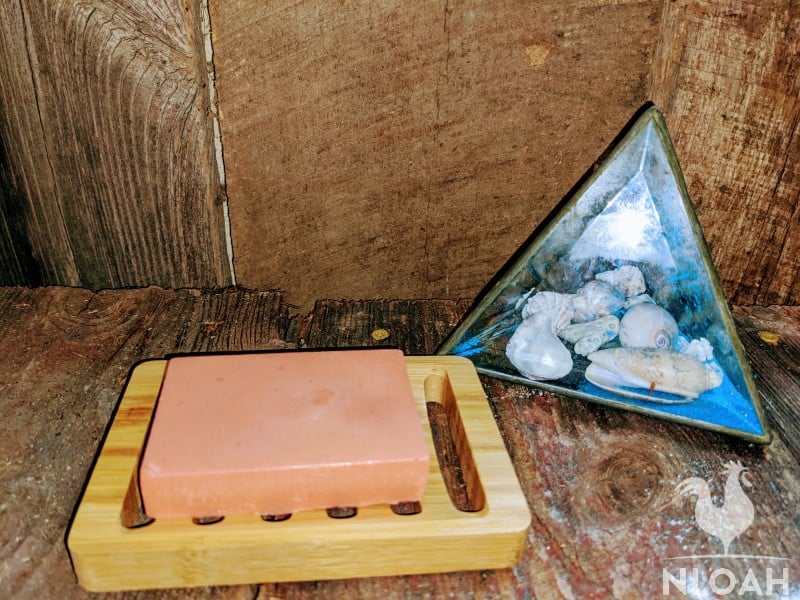
When you use goat’s milk or similar non-transparent soap base, the orange zest can be stirred into the mixture and used as a natural exfoliant.
Because you never have to mess with lye when using a melt and pour soap base, the project is safe enough to allow the little ones to help:
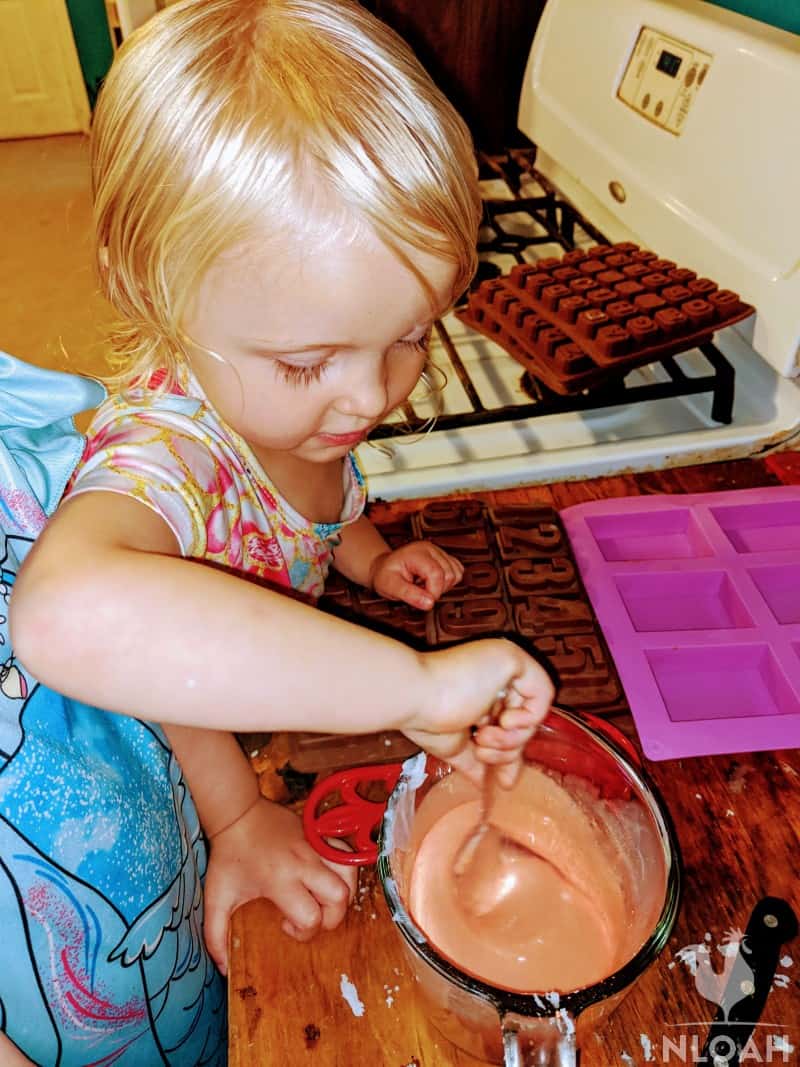
When making this recipe I used a goat’s milk melt and pour soap base, but the ingredients and measurements are the same regardless of the type of melt and pour soap base used.
You can grate the skin of a whole orange to make enough zest for the recipe, and allow the powdery substance to dry overnight before using.
Peeling the orange, cutting it into small bits, and baking the peel in the oven to dry vastly speeds up the process, but will leave you with larger peel bits than a true zest.
To dry orange peel in the oven, place it on its lowest setting – typically 185 to 250 degrees F (85 to 121 C). In the photo below, there are small chunks of peel from three small oranges.
It took roughly two and a half hours. You can run the dried peel chunks through a blender or food processor to create smaller and more zest size bits after taking them out of the oven.
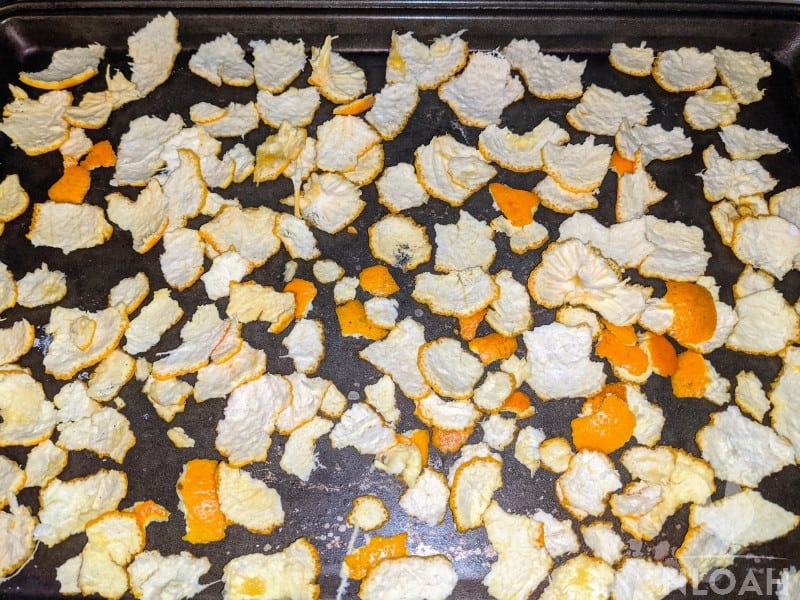
Check how the peel drying is progressing about every 30 minutes to prevent scorching. Thicker pieces that still have more of the soft inner peel will tend to scorch more quickly.
In the photo below, you can see that I also ended up with some scorched orange peel, which I simply tossed to the chickens as a treat and did not use in the soap making.
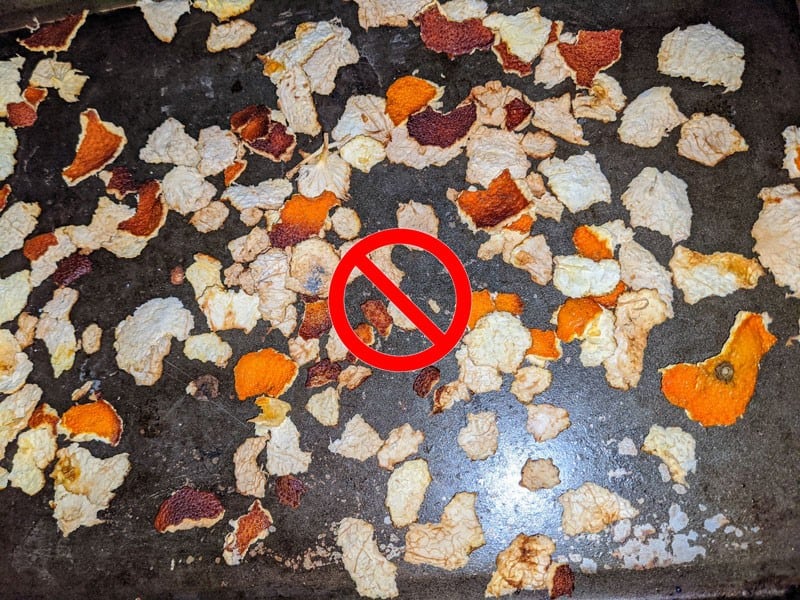
Why Are Oranges Good For Soap Making?
- The vitamin C in the orange peels boasts natural antioxidant properties that can help prevent and, perhaps, even heal skin cell damage.
- The flavonoids in the peels are also a significant source of vitamin A, potassium, and calcium – all of which promote good, overall health.
- The vitamin C in the orange peels can help the production of both elastin and collagen, to potentially give the skin a younger look as it becomes more supple – reducing the appearance of wrinkles.
Orange Zest Soap Recipe
Equipment
- soap molds
- Glass measuring cup with a pour spout
- Sharp knife
- Measuring spoons
- Toothpick
Ingredients
- Zest from one large or three small oranges
- Orange mica powder optional but recommended
- 10 – 15 drops Orange essential oil optional but recommended for an enhanced scent
- 2 pounds goat’s milk melt and pour soap base can usually create around 10 standard size bars of soap
- Rubbing alcohol optional but useful to coat molds with to prevent air bubbles and create a smooth surface on the bottom and sides of the bars
Instructions
- Cut about four to five large chunks from the soap base.
- Put the soap base chunks into the glass measuring cup.
- Place the measuring cup with the melt and pour soap base chunks into the microwave for 60 seconds.
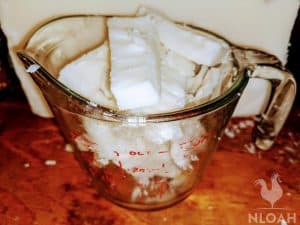
- Remove the measuring cup from the microwave oven, and stir to thoroughly combine the soap base. If you are using a clear glycerin base, the chunks may be completely melted, but if using goat’s milk, shea butter, or an oatmeal melt and pour soap base, it will likely need to be heated through at least one more time.
- Put the glass measuring cup with the soap chunks back into the microwave for 30 seconds.
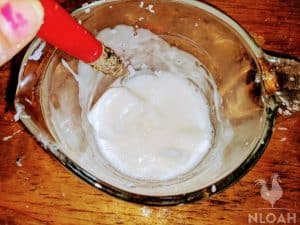
- Repeat previous step until all of the melt and pour soap base have melted entirely. Do not get into a hurry and microwave the chunks for two minutes or so all at once – skipping the stirring steps. The melt and pour base can easily become scorched if overly subjected to heat.Take note of the image below to see what a goat’s milk melt and pour soap base commonly looks like after being in the microwave for about one and a half minutes.
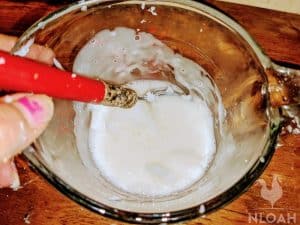
- Next, place the soap molds into your workspace – making sure that the spot is 100 percent level, first. I always place my silicone molds onto a baking sheet so they can be moved out of the work space if I am going to be using it for other tasks in the next few hours, or to put the molds into the refrigerator to cure them quicker.
- Stir in the orange zest.
- Add in the orange essential oil and the mica powder, and stir to completely combine.
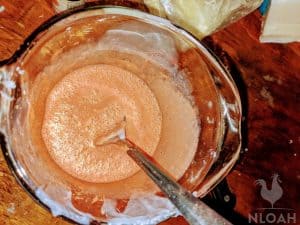
- Pour the orange zest melt and pour soap recipe into the molds.
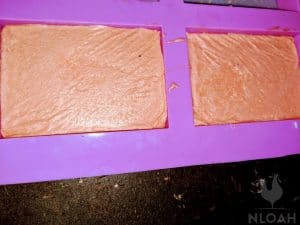
- Pop any air bubbles that form on the soap gently with a toothpick. Only press the toothpick into the air bubble and not through the soap.
- To cure the orange zest melt and pour soap base, place the molds in a level spot in the refrigerator for about half an hour or in a level spot and allow them to harden at room temperature for approximately two to three hours.
Soap Making Scraps
I purchased some inexpensive tiny molds of the alphabet and numbers so I could make good use of any scrap soap base that was leftover after filling my molds.
I just pour a tiny bit of each recipe I am making into a letter or number mold cavern and create a fun, natural, and homemade homeschooling resource – making bath time a learning time too!
The little soaps are a truly fun and interactive way to help young children learn to spell their own names, words, and to identify numbers.
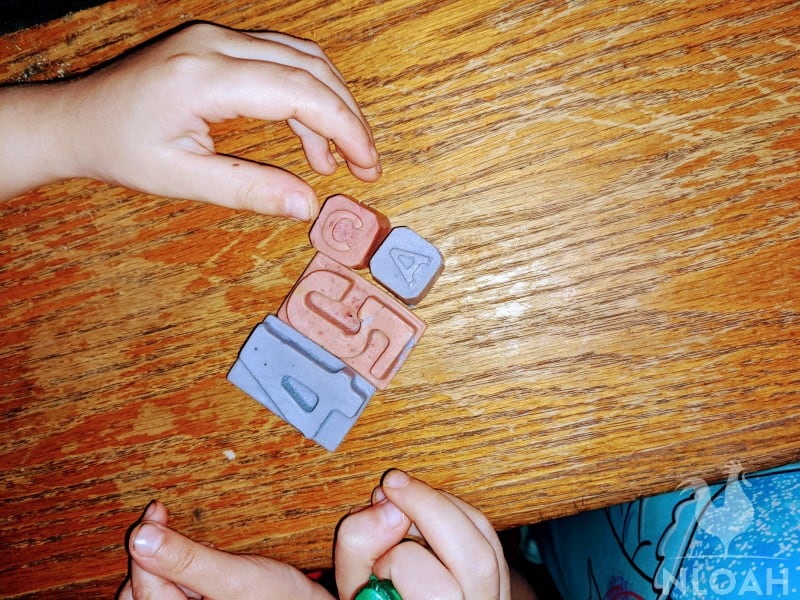
The cured orange zest soap can be stored in a plastic or similar airtight container or in a Ziploc bag for roughly three to six months.
Typically, a melt and pour soap base should retain its scent and texture for a year, but because fresh matter was used – the orange zest, the life of the soap is far shorter.
Natural fresh matter in soap tends to foster the growth of mold and bacteria when kept longer than three to six months.
Liked this soap recipe, don’t forget to pin it to your favorite Pinterest board!
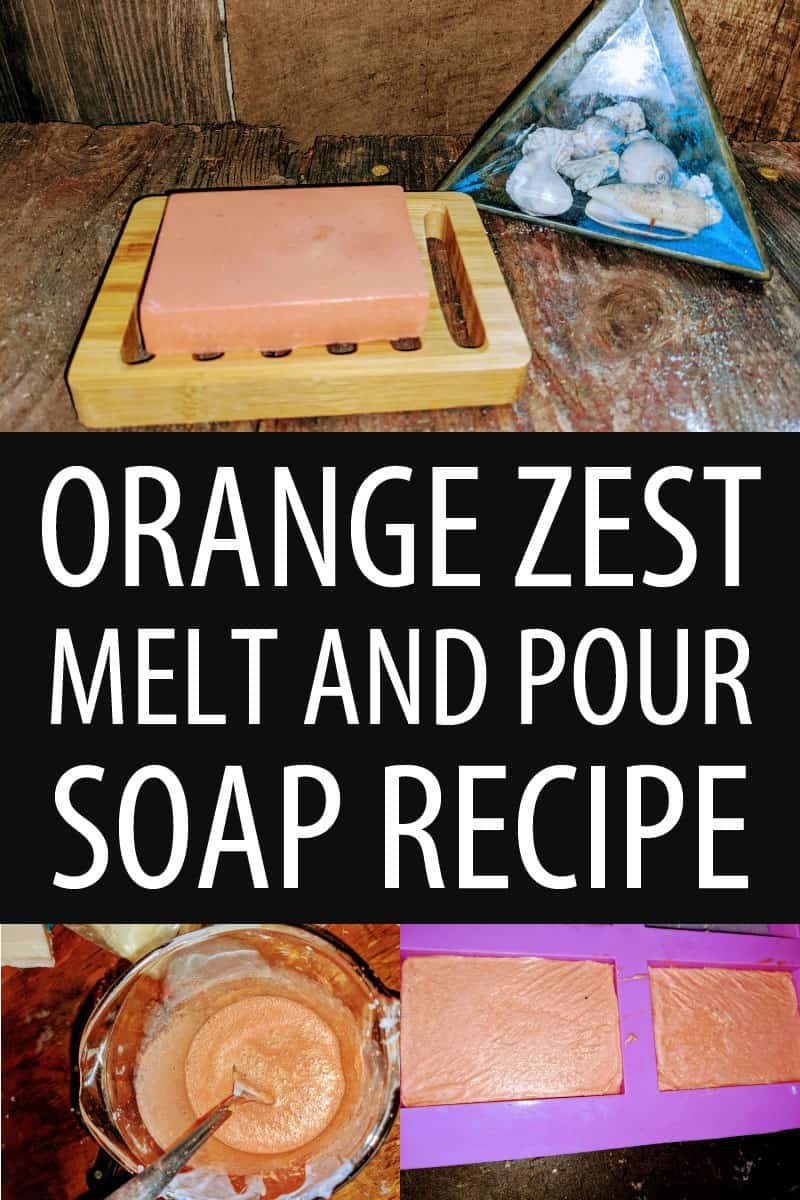

Tara lives on a 56 acres farm in the Appalachian Mountains, where she faces homesteading and farming challenges every single day, raising chickens, goats, horses, and tons of vegetables. She’s an expert in all sorts of homesteading skills such as hide tanning, doll making, tree tapping, and many more.

